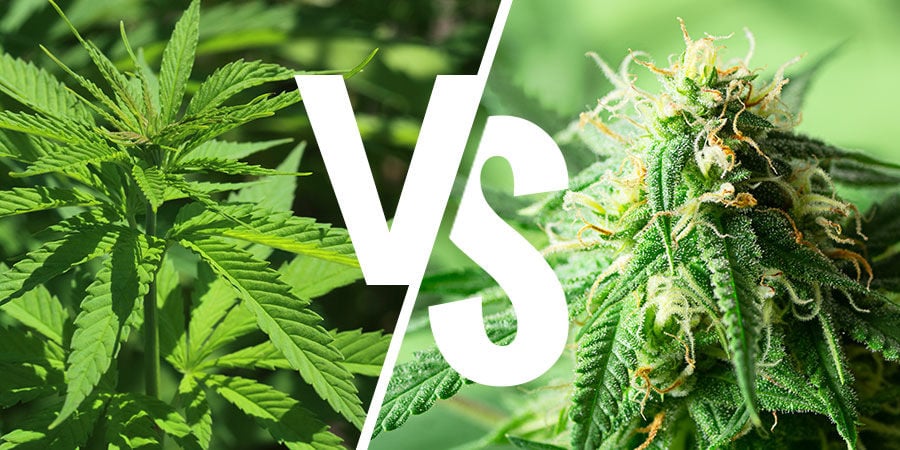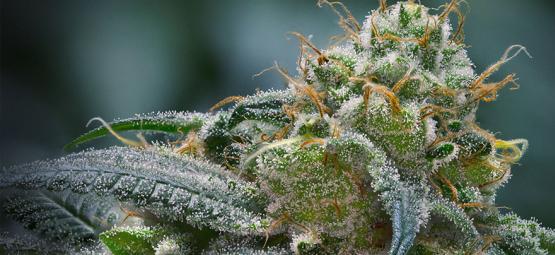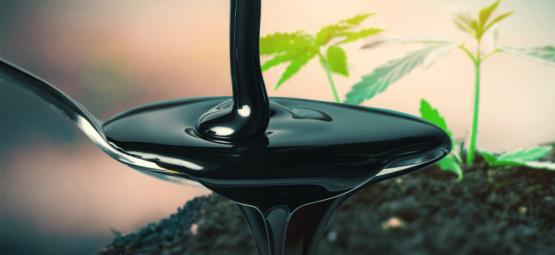Indica VS Sativa: Does It Still Matter In 2025?
Since their introduction over 200 years ago, the terms "indica" and "sativa" have served as a principal way to categorise cannabis plants based on their appearance and supposed effects. But just how relevant is the age-old indica vs sativa distinction in the era of modern cannabis?
Indica and sativa are two subspecies of cannabis that both growers and users tout for exhibiting notable differences. But new research suggests that the age-old distinction between Cannabis indica and Cannabis sativa might not be all it's made out to be. Keep reading to learn more about indica vs sativa cannabis.
What do the terms indica & sativa mean?
Cannabis sativa was first described in 1753 by Swedish botanist Carl Linnaeus. Modern biologists believe that Linnaeus likely based his description on cannabis plants grown in Europe at the time to be used in the production of fibre, nutritious seeds, and hemp oil (Clark & Merlin, 2016). These plants most likely looked similar to what we now call “industrial hemp”, with long, fibrous stems, thin, bright-green foliage, and wispy flowers containing low levels of THC.
The term Cannabis indica, on the other hand, was coined by French biologist Jean-Baptiste Lamarck in 1785 and described cannabis cultivars originating from India. These plants looked significantly different to the cannabis plants described by Carl Linnaeus 30 years earlier; they were shorter, displayed broad, dark-green leaves, and produced resinous flowers with high amounts of THC that were often consumed as part of spiritual ceremonies in India and neighbouring areas. Given the stark differences between Cannabis sativa and Cannabis indica, Lamarck proposed classifying the plants as two different species (Clarke & Merlin, 2016).
Fast-forward over 200 years, and the terms indica and sativa are still very much at the forefront of most discussions about cannabis. Many cannabis growers and users continue to invoke these terms to differentiate cannabis plants based on their morphology and, perhaps more interestingly, the effects they produce.
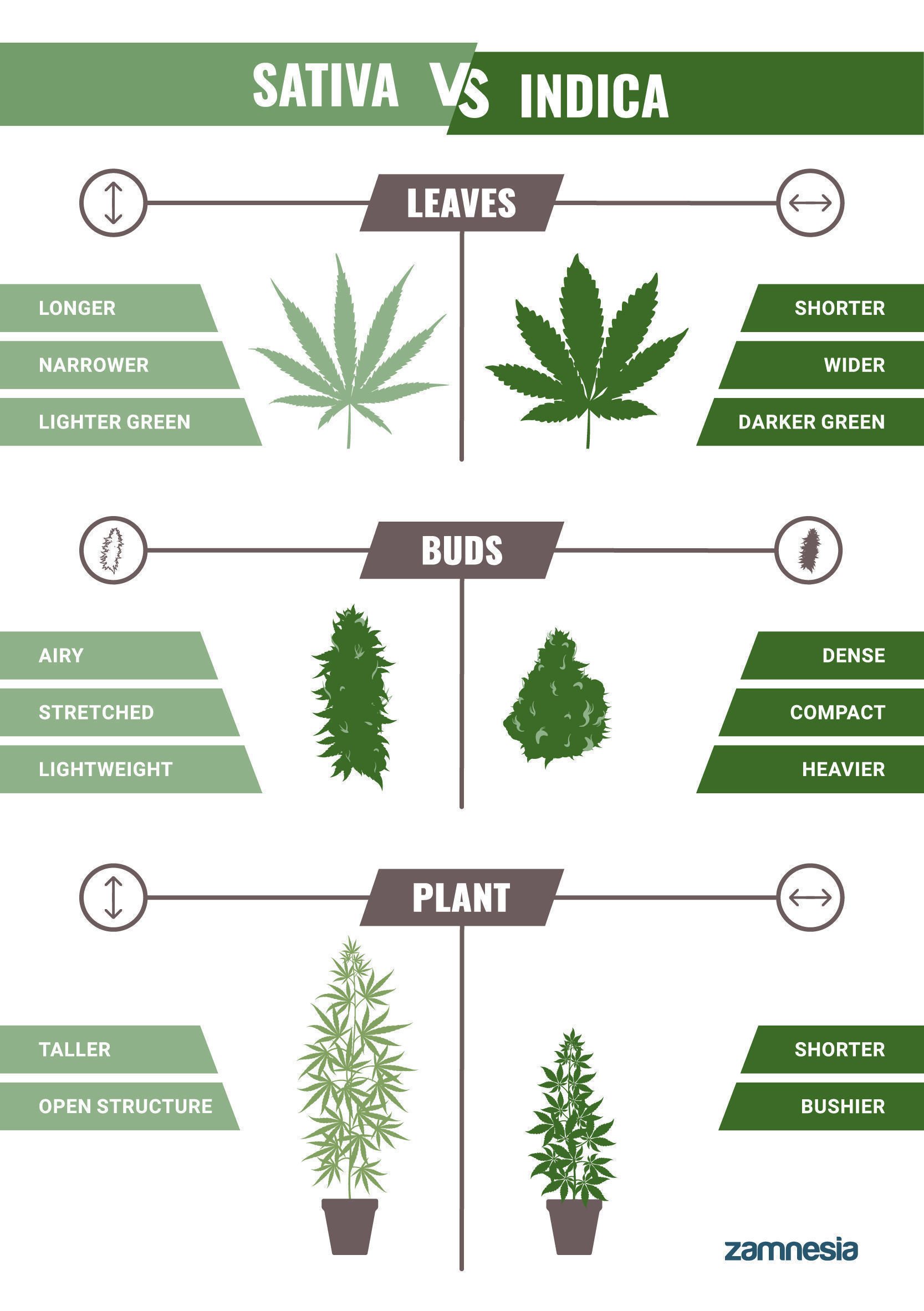

What are indica, sativa, and hybrid strains?
The term “strain” really refers to a specific cultivar (i.e. a selectively bred plant variety) that displays unique grow traits, effects, or aromas. Unlike other crops that have been hybridised and stabilised to a great degree, cannabis still has a rich gene pool capable of producing many different cultivars.
When you shop for cannabis strains, you’ll see them commonly categorised as sativa, indica, or hybrid. This is mainly the discretion of breeders/seed banks, and is based on the plant’s physical characteristics, genetics, and supposed effects.
-
Sativa strains are typically labelled as taller plants with thin, bright-green foliage, larger spaces between nodes (or branches), and longer flowering times (meaning their flowers take more time to mature).
-
Indica strains are typically shorter plants with broad, dark-green foliage, tightly spaced nodes, and shorter flowering times.
-
Hybrid strains contain different degrees of indica and sativa genetics, and therefore may display a combination of both indica and sativa traits. Coffeeshop or dispensary menus, for example, often display the percentage of indica/sativa genetics of their hybrid strains.
Do indica and sativa plants produce different effects?
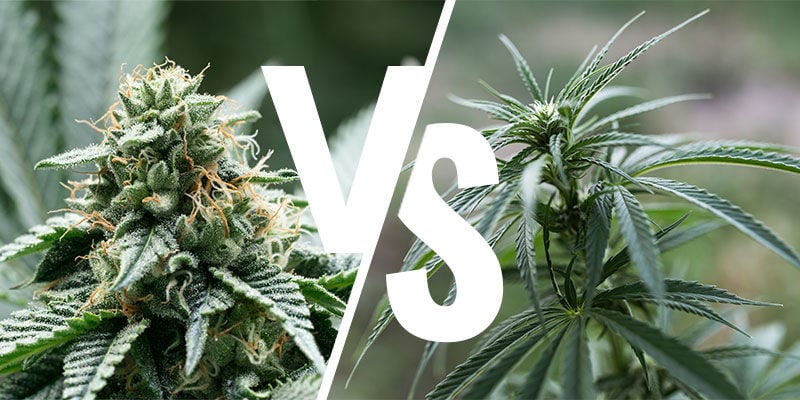
There is an age-old belief among cannabis growers and users that indica and sativa strains produce notably different effects. In very general terms, people tend to believe that:
-
Cannabis sativa is energising. It produces an energetic, uplifting, and creative cerebral sensation (known as "being high").
-
Cannabis indica is relaxing. It produces a sleepy, physically relaxing, and sometimes narcotic-like effects (known as "being stoned").
Many cannabis growers, users, and even some professionals still stand by this traditional view. However, the scientific literature behind the cause of cannabis’ diverse effects is far from clear.
According to the classifications of sativa and indica first made by Linnaeus and Lamarck, one could assume that the different effects of sativa and indica plants might come down to their potential differences in cannabinoid concentration. After all, the indica plants Lamarck described likely contained more THC than the fibrous hemp plants described by Linnaeus. However, this idea doesn’t hold up today, as there are both high-THC indica and sativa strains on the market, and studies show that there are no substantial differences in cannabinoid content between them (Watts et al., 2021).
More recent research suggests that terpene concentration may have an influence on the psychoactive effects of different cannabis varieties. For example, Arno Hazekamp et al. (2016) explored the chemical variations of 68 sativa and 63 indica strains (the varieties were deemed indica or sativa by their suppliers). Using gas chromatography with flame ionisation detection, Dr Hazekamp and co were able to analyse the cannabinoid and terpene content of the different test samples, finding that sativas and indicas were in fact distinguishable by their terpene content.
More specifically, the research found that:
-
Sativa plants tend to contain higher concentrations of trans-bergamotene, trans-beta-farnesene, delta-3-carene, and terpinolene.
-
Indica plants tend to contain higher concentrations of beta- and gamma-eudesmol, guaiol, myrcene, and gamma-elemene. Additionally, hydroxylated terpenes (terpenes with an alcoholic -OH group attached to the molecule) such as beta/gamma eudesmol, guaiol, alpha-terpineol and borneol, were almost exclusively found in indica samples.
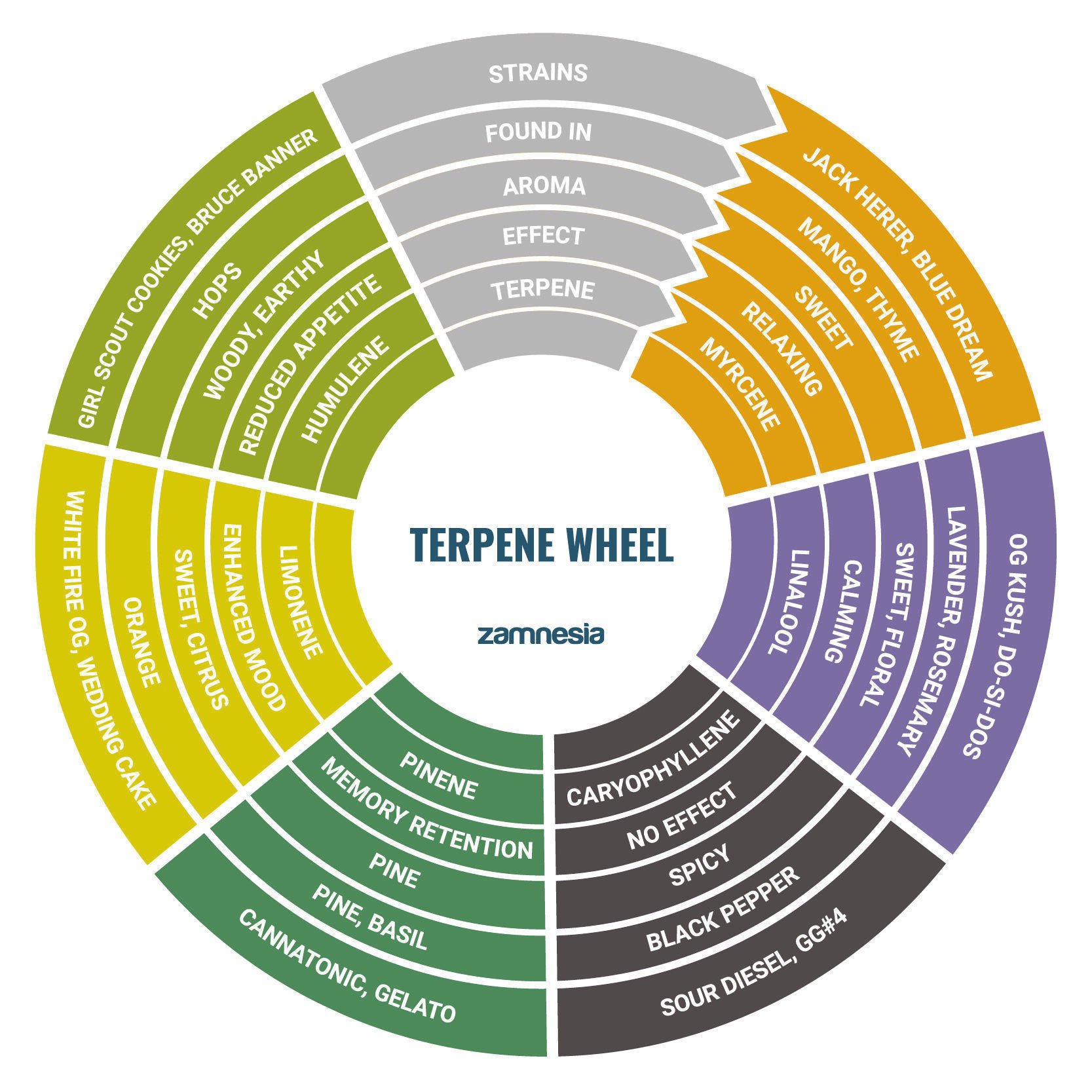
While this research offers some insight into one of the potential causes of cannabis' varied effects, the findings point to something much more important; namely, the need for a refined way to classify cannabis—based not on a plant’s supposed genetic or geographic origin, but instead on its chemical constitution.
For more further information, also check out Arno Hazekamp's papers:
-
That which we call Indica, by any other name would smell as sweet. An essay on the history of the term Indica and the taxonomical conflict between the monotypic and polytypic views of Cannabis.
A note on Type I, Type II, and Type III cannabis labelling
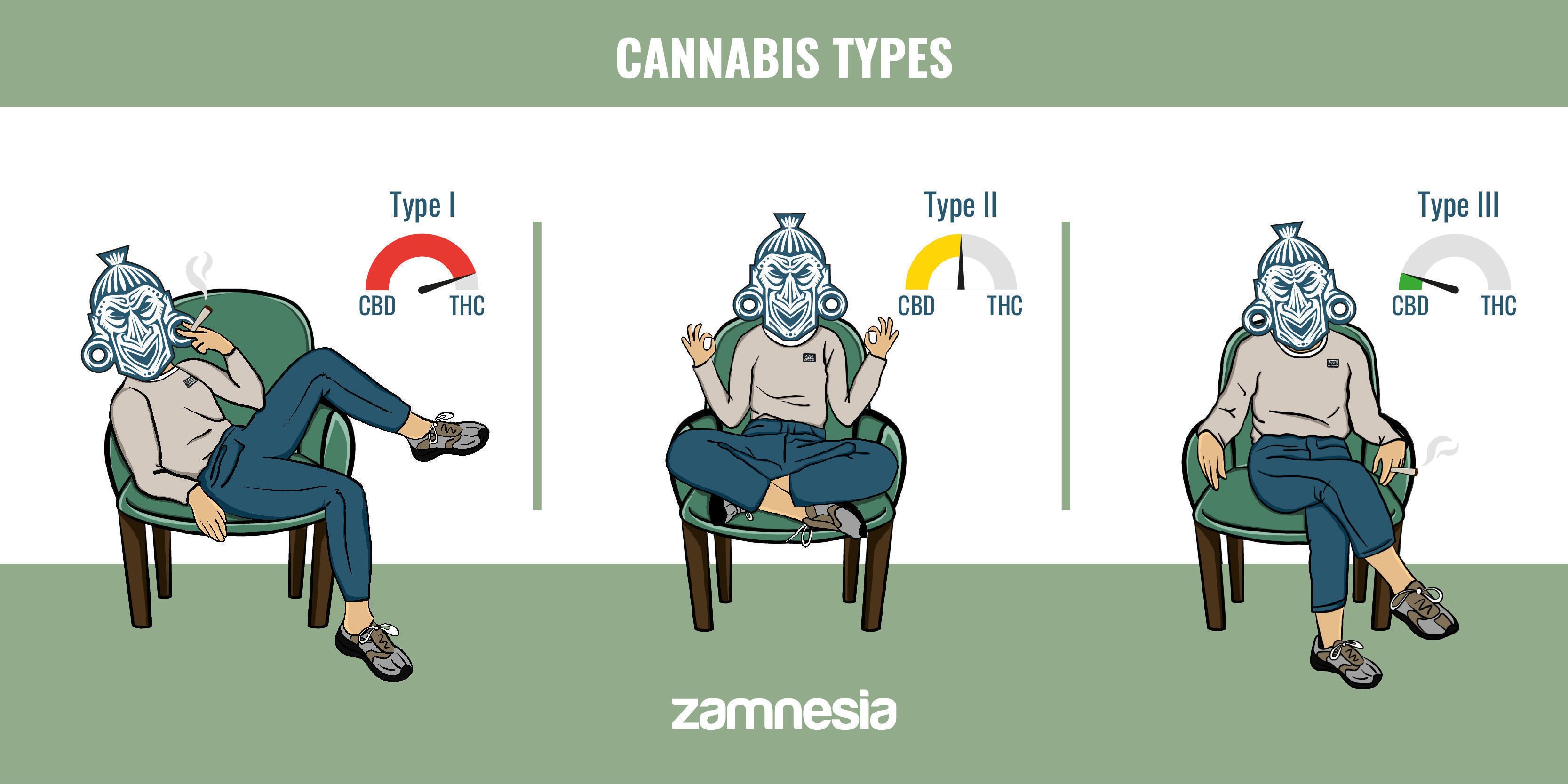

In an attempt to move away from the traditional sativa-indica debate, some people in the cannabis industry are advocating for a model of labelling cannabis “chemovars” based on their THC and CBD content. This model was first proposed by researchers in the 1970s for legal/forensic purposes (Small & Beckstead, 1973) and identifies three distinct types of cannabis:
- Type I - Cannabis predominantly rich in THC
- Type II - Cannabis with relatively balanced amounts of THC and CBD
- Type III - Cannabis predominantly rich in CBD
Note that this model does not account for differences in terpenes, which likely play a very important role in the way cannabis affects us (Ferber et al., 2020).
Moving away from traditional weed vernacular
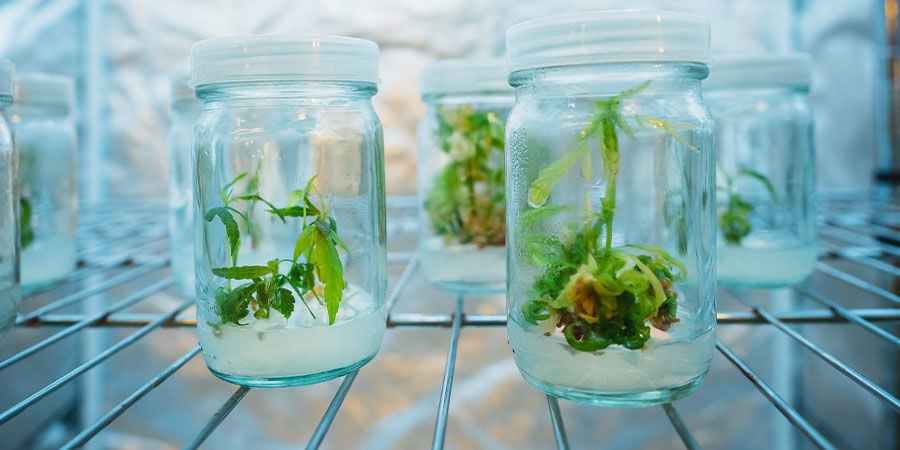
The terms sativa and indica date back to the 18th century and were first created to classify cannabis based on notable morphological differences. Over 200 years later, these same terms are now being used to describe the experiential effects of different cannabis varieties without much scientific grounding.
Our understanding of cannabis is growing exponentially, as is our ability to test this plant for its chemical makeup in modern laboratories. Meanwhile, cannabis is also becoming evermore accessible as a result of policy changes. In these circumstances, it might be high-time we drop the age-old indica/sativa nomenclature in favour of science-backed approaches based on chemical constituents.
Consider this quote from a 2016 interview with acclaimed cannabis researcher Dr Ethan Russo:
“One cannot in any way currently guess the biochemical content of a given Cannabis plant based on its height, branching, or leaf morphology. The degree of interbreeding/hybridization is such that only a biochemical assay tells a potential consumer or scientist what is really in the plant” (Piomelli & Russo, 2016).
Thankfully, we don't need terms like indica and sativa in order to select the ideal cultivar for our needs. Thanks to advances in breeding and cannabis science, seed companies and retailers can establish a much better idea of the potential effects and growing characteristics of a specific cultivar, as opposed to lumping it into a broad category based on its supposed indica or sativa nature. At Zamnesia, we carry a variety of top-quality strains all exhibiting unique effects, as detailed in their individual descriptions.
Marijuana Seeds
Click here to browse countless varieties of regular, feminized, and autoflowering cannabis seeds from the best banks in the world.
The only thing left to do is explore those that appear most appealing and suitable; that, along with consulting experienced growers and consumers, is the best way to discover what different cultivars have to offer.
- Arno Hazekamp. (2017). An Indian Perspective On Cannabis For Treatment Of Pain - https://www.researchgate.net
- Clarke, R.C. & Merlin, M.D. (2016). Cannabis Taxonomy: The ‘Sativa’ Vs. ‘Indica’ Debate - American Botanical Council - https://www.herbalgram.org
- Hazekamp, A., Papadimitriou, S., & Tejkalová, K. . (2016). Cannabis: From Cultivar To Chemovar II—A Metabolomics Approach To Cannabis Classification - https://www.liebertpub.com
- J. Erkelens, & A. Hazekamp. (2014). That which we call Indica, by any other name would smell as sweet An essay on the history of the term Indica and the taxonomical conflict between the monotypic and polytypic views of Cannabis - https://www.semanticscholar.org
- Piomelli, D. & Russo, E. (2016). The Cannabis Sativa Versus Cannabis Indica Debate: An Interview With Ethan Russo, MD - https://www.liebertpub.com
- Sari Goldstein Ferber, Dvora Namdar, Danielle Hen-Shoval, Gilad Eger, Hinanit Koltai, Gal Shoval, Liat Shbiro, & Aron Weller. (2020, February). The “Entourage Effect”: Terpenes Coupled with Cannabinoids for the Treatment of Mood Disorders and Anxiety Disorders - https://www.ncbi.nlm.nih.gov
- Small, Ernest, Becksteaed, & H. D. (1973, September). Cannabinoid Phenotypes in Cannabis sativa - https://www.nature.com
- Watts, Sophie, McElroy, Michel, Migicovsky, Zoë, Maassen, Hugo, van Velzen, Robin, Myles, & Sean. (2021, October). Cannabis labelling is associated with genetic variation in terpene synthase genes - https://www.nature.com
You might also like





 United States
United States
